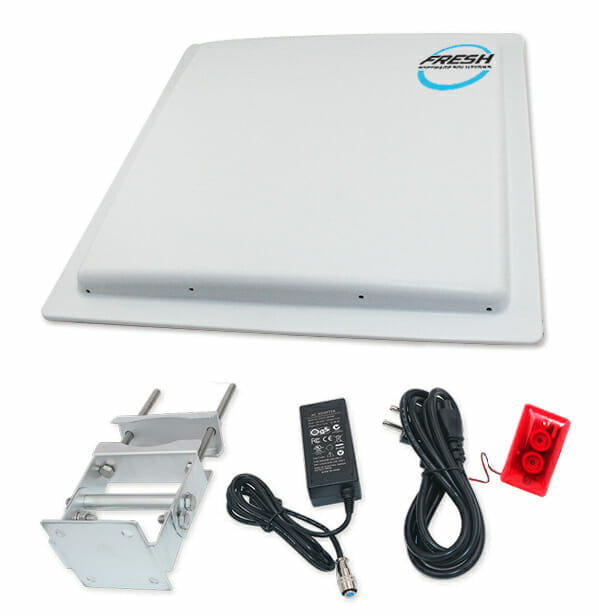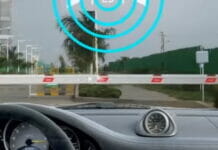Prices / Buy Systems Write A Request
Software Download Technical Support
A retail loss prevention system is a set of measures and technologies that retailers use to prevent and reduce losses due to theft, fraud, and other forms of inventory shrinkage. Retailers implement loss prevention systems to protect their merchandise, employees, and profits from various types of losses.
Common Components of a Retail Loss Prevention System Include
-
- Electronic Article Surveillance (EAS) – tagging system that involves attaching small security tags to products that trigger an alarm if they are taken out of the store without being properly deactivated or removed at the point of sale.
- Security cameras – installed in the store to monitor customer behavior and detect any suspicious activity.
- Access control systems – limit access to certain areas of the store or to sensitive information, such as inventory storage or cash registers, to authorized personnel only.
- Point-of-sale (POS) systems – monitor transactions, detect fraudulent activity, and track inventory levels in real-time.
- Inventory management systems – track inventory levels and reduce loss due to theft, damage, or expiration.
- Staff training – to recognize and respond to potential threats, such as suspicious behavior or attempts to remove security tags.
A comprehensive retail loss prevention system can help retailers minimize financial loss due to theft or fraud, reduce insurance premiums, maintain a safe shopping environment, and enhance customer trust and loyalty.
PRICE / Buy Loss Prevention System
Nowadays, the retail business is witnessing a new era in this technological age. Moreover, along with new styles of earning profits, the thefts are also not old-fashioned. Hence, to go over the intelligent frauds, you have to be smart enough. The retail loss prevention techniques will help you to succeed in this attempt. These are a set of modern methods to cut short the probable loss in your business. The anti-theft products also play a vital role in this respect. We devise some excellent models and procedures to prevent your business from suffering considerable loss. Preservation of profits is the ultimate goal for any business person. Therefore, he or she must analyze the market first to understand the current scenario.
The Loss Prevention Techniques for Retail Stores And Warehouses
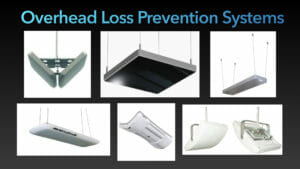
Now get to know about the kinds of the frauds in retail shops. There are different kinds of thefts that you must be aware of. These are;- Internal Theft, External Theft, Administrative Errors, Supplier Frauds. Moreover, these types are typical for the warehouses too. Therefore, the loss prevention methods applicable for the retail stores will hold good for warehouses too. Thus, if you store the excess stock in the warehouse, be very cautious about the frauds.
Internal Theft refers to shoplifting involving shrinkages in the products without much notice of the owner. Generally, the internal employees have links with these kinds of thefts. Some examples include fake return claims, fake gift cards, and many more. On the other hand, External Theft comprises more than 36% of the entire shoplifting. Stealing some items and returning them for more cash is one of the popular schemes in this regard. Another way is purchasing more merchandise by counterfeiting.
Overview Of Loss Prevention
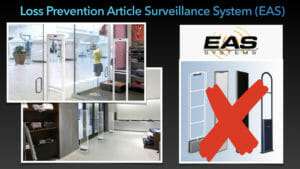
No human is perfect. Therefore, businesses will be susceptible to more administrative errors if record-keeping is mainly manual. Moreover, the book-keeper should have a sound knowledge of accounting techniques and principles. An incompetent person tends to make more errors resulting in a huge loss in the end. You should have proper control measures to stop thefts from both internal and external sides. However, you must not forget the manufacturers and the suppliers. Although it is not very common, it’s not impossible either. Therefore, your strategies to prevent loss should also focus on them and try to figure out the weak point. Analyzing the same will make you more attentive. New ideas can come across your mind to stop recurrences of such incidents. Now get to know about the products to prevent loss.
Key Benefits Of Loss Prevention
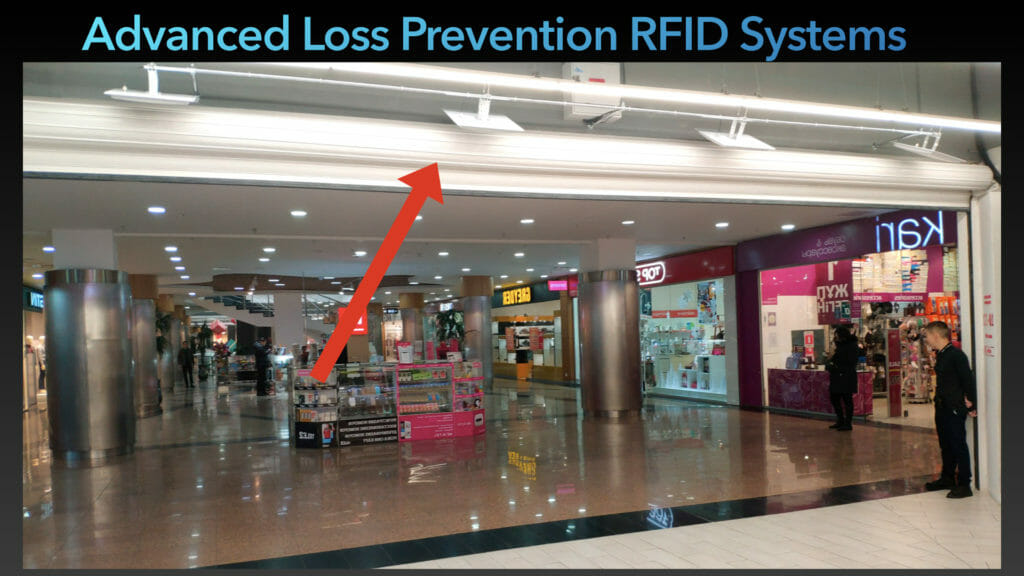
Deployment of the correct control system is highly essential to deal with various thefts in your store. The entire system depends on four main factors- cash handling, physical security, staff, and of course, the products. We have multiple products to deal with loss prevention for the retail stores. Mono anti-theft system of our company is one of the significant products for anti-theft. Moreover, the package involves installing an audible siren on unauthorized removal of any product. Several supermarkets are already approving such a technology. It is authentic and easy to use. Download the respective app from Fresh Software (Anti-Theft Software) and operate the device with full clarity. In case of any doubts, you can call our customer care number.
Moreover, our executives are ready to help you in every possible way. The 24×7 customer support service will thus make sure that you stay satisfied always. Our primary focus is safeguarding your shop from all the potential frauds. However, to prevent accounting fraud, you have to install an appropriate system to catch the mismatches. It is better to launch the software to take care of most of the financial aspects.
What Are The Advantages Of Loss Prevention System
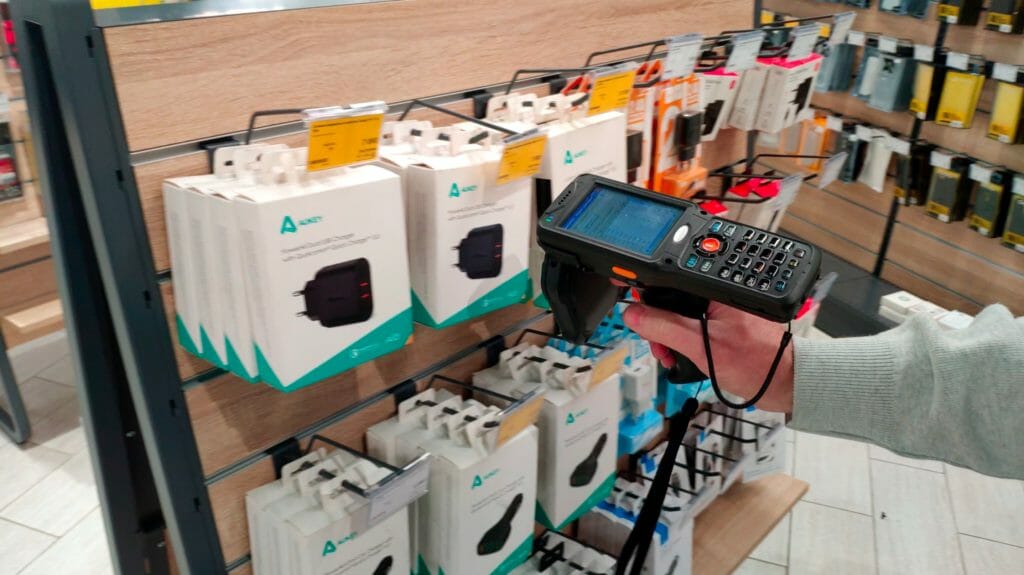
Our loss prevention systems can be used for a mobile RFID inventory or a record-keeping with a help of ERP (Enterprise Resource Planning).
The Loss prevention system as a progressive system for RFID inventory and record-keeping.
The most innovative solution in our loss prevention system is that it can be used for the future RFID inventory process. While adding optional functions and installing a software, any user can execute a fast and precise RFID inventory with the help of anti-theft system as well, or send the data into a manual mobile RFID reader at the discretion of a user.
Another device for constant watch and high security is the CCTV camera. This also acts as extraordinary evidence in the court of law. Our cameras comprise all the advanced features to capture every minor detail in the shop. Hence, no corner will be left unturned. Apart from this, the most common security measure is to keep a security guard from any third-party organization. However, in this technological era, a robot can also fulfill its purpose in a much better way indeed. So, connect with us today for an appropriate solution to prevent the probable losses. For perfect placement of any of the devices, you can contact us. Just one agreement, and we will take care of the best treatments. However, the contract is renewable after every one year. Our experts will come for a periodic check to ensure the proper functioning of the device. A mirror can also be a great support in the prevention of physical thefts.
Knock Down The Best Details About Loss Prevention
The cash section is definitely the most important and crucial segment in the whole shop. Please go for a secured POS terminal to ensure complete protection in this section. Furthermore, you should also impose certain restrictions on making phone calls. A cash register should be there, and you must opt for a period audit for higher security. Wondering how to deal with the product fraud? All your employees should have adequate product training as well as LP training.
Moreover, there must be a proper hiring process to recruit only reliable employees, especially for the showroom or the warehouse. There must also be a well-maintained stock register in the warehouse. This will record every addition, transfer, and disposal to and from the existing stock. Therefore, you must do a background check and ensure no criminal records before recruiting any personnel. The most essential tools to prevent loss of products may include the following options. Signage: It is currently a great measure to get rid of the shoplifters. In a lot of places, people put big placards with “Beware of Thefts” written. Several recent surveys say that they are highly effective and reduced theft cases to a great extent.
Return Policy
There should be a strong return policy to stop fraudulent returns. Please ensure that every receipt contains this policy in bold to make the purchaser aware of the same. Loss Prevention System: One of the biggest ways to prevent fraud is electronic article surveillance or EAS. It will alert you in case any person tries to run away with a tagged product. Apart from this, you must have a proper design of the shop to keep the products. So, start adopting any of the methods for a secured business in the long-run.
Call to Fresh USA Company to Get The Best Quote: Theft Prevention System by Fresh USA, Inc.
Chicago, Retail Loss Prevention Systems
Prices / Buy Systems Write A Request
Software Download VIDEO / How It Works
Retail Loss Prevention
Introduction
In today’s fiercely competitive retail market, safeguarding assets and reducing inventory shrinkage is not just an operational need—it’s a business imperative. Retail loss prevention encompasses all strategies, technologies, and policies aimed at minimizing losses due to theft, fraud, administrative errors, and other forms of shrinkage. At the heart of modern loss prevention solutions is RFID technology. Fresh USA Company, based in the greater Chicago area, is a leading RFID technology systems, software, and hardware developer supplying state-of-the-art products and services to retailers worldwide.
By integrating advanced RFID systems with traditional security measures, retailers can track inventory in real time, enhance accuracy, and ultimately boost profitability. In this article, we will delve into the various aspects of retail loss prevention and how cutting-edge RFID solutions by Fresh USA Company are transforming the landscape.
Understanding Retail Loss Prevention
Definition of Retail Loss Prevention
Retail loss prevention refers to the practices and strategies used by businesses to reduce inventory loss. This loss, commonly known as shrinkage, occurs from multiple sources such as theft (both internal and external), administrative errors, and supplier fraud.
Types and Causes of Retail Loss
Retail loss can stem from several factors:
- Internal Theft: Losses incurred due to dishonest activities by employees.
- External Theft: Shoplifting and organized retail crime by individuals outside the organization.
- Administrative Errors: Mistakes in recording inventory, pricing discrepancies, and mismanagement.
- Supplier Fraud: Discrepancies in the delivery and billing processes.
Impact of Loss on Retail Businesses
The impact of retail loss is far-reaching:
- Financial Loss: Direct reduction in profit margins and revenue.
- Operational Disruptions: Inventory inaccuracies lead to stockouts and overstock issues.
- Customer Dissatisfaction: Poor inventory management can result in unavailability of popular products.
- Reputation Damage: Repeated loss issues may harm a brand’s reputation and consumer trust.
Prices / Buy Systems Write A Request
Software Download VIDEO / How It Works
The Role of RFID Technology in Loss Prevention
What is RFID Technology?
RFID (Radio Frequency Identification) is a technology that uses radio waves to read and capture information stored on a tag attached to an object. This system comprises RFID tags, readers, and antennas, working together to provide real-time tracking of inventory.
Key Components: Hardware & Software
- Hardware: Includes RFID tags, readers, and antennas that enable the physical detection and tracking of items.
- Software: Inventory management systems that integrate data from RFID hardware to provide actionable insights and real-time updates.
How RFID Enhances Inventory Accuracy
RFID technology automates the inventory process by continuously tracking product movement. This automation minimizes human error, speeds up inventory counts, and ensures that any discrepancies are quickly identified and addressed.
Solutions Offered by Fresh USA Company
Overview of Products and Services
Fresh USA Company stands at the forefront of retail loss prevention by offering a comprehensive suite of RFID solutions. Their offerings include both hardware and software designed to work seamlessly together, ensuring robust inventory management and enhanced security.
Hardware Solutions: RFID Readers, Tags, and Antennas
- RFID Readers: Devices that capture data transmitted by RFID tags.
- RFID Tags: Small, durable devices attached to products that store unique identification information.
- Antennas: Facilitate communication between RFID tags and readers, ensuring data is transmitted accurately across various ranges.
Software Solutions: Inventory Management and Analytics
Fresh USA Company’s software solutions integrate with RFID hardware to provide:
- Real-Time Inventory Tracking: Continuous updates on stock levels.
- Analytics and Reporting: Detailed insights into inventory trends and loss incidents.
- Integration Capabilities: Seamless connection with existing POS systems and other retail software to create a unified loss prevention ecosystem.
Integration with Existing Retail Systems
By integrating RFID technology with existing retail management systems, Fresh USA Company helps streamline operations. This integration ensures that inventory data flows seamlessly between various systems, reducing discrepancies and enhancing overall operational efficiency.
Prices / Buy Systems Write A Request
Software Download VIDEO / How It Works
Benefits of Implementing RFID for Retail Loss Prevention
Real-Time Inventory Tracking
RFID systems offer real-time monitoring, allowing retailers to have up-to-date visibility of their inventory at all times. This immediate tracking capability makes it possible to quickly identify any loss or discrepancy as soon as it occurs.
Improved Accuracy and Operational Efficiency
Automated data capture through RFID reduces reliance on manual counting, significantly decreasing human error. This improved accuracy leads to better decision-making, efficient restocking, and optimal resource allocation.
Cost Reduction and Increased Profitability
By minimizing shrinkage and improving inventory management, RFID technology helps reduce operational costs. The financial savings from reduced losses can be reinvested into the business, boosting overall profitability.
Enhanced Customer Experience
With better inventory control, retailers can ensure that popular items are always in stock, leading to improved customer satisfaction. An efficient loss prevention system also contributes to a smoother shopping experience, building customer trust and loyalty.
Physical Security Measures Complementing RFID
Surveillance Cameras and Their Role
While RFID technology provides data-driven insights, physical security measures like surveillance cameras offer a visual layer of protection. Strategically placed cameras help monitor high-risk areas and serve as a deterrent to potential thieves.
Electronic Article Surveillance (EAS) Systems
EAS systems work alongside RFID to prevent theft. These systems trigger alarms when tagged merchandise is taken out of the store without proper deactivation at checkout, thereby complementing RFID tracking.
Store Layout and Environmental Design
A well-designed store layout minimizes blind spots and creates a natural flow that reduces opportunities for theft. Thoughtful placement of products, displays, and security stations can significantly enhance loss prevention efforts.
Employee Training and Policy Enforcement
Employees are a critical part of any loss prevention strategy. Regular training on loss prevention techniques, combined with clear policies and procedures, empowers staff to detect suspicious activities and respond appropriately.
Prices / Buy Systems Write A Request
Software Download VIDEO / How It Works
Implementing a Comprehensive Loss Prevention Strategy
Conducting a Risk Assessment
Before deploying any loss prevention system, a thorough risk assessment is essential. Identify vulnerabilities within the retail environment by analyzing historical loss data, observing store operations, and consulting with security experts.
Setting Clear Objectives and Goals
Define specific, measurable goals for your loss prevention strategy. Objectives might include reducing shrinkage by a certain percentage, improving inventory accuracy, or enhancing overall security.
Deployment and System Integration
Implementing RFID technology requires careful planning and integration with existing systems. A phased approach often works best:
- Pilot Testing: Start with a single store or department to test system efficacy.
- Full Deployment: Scale the system across all locations based on successful pilot results.
- System Integration: Ensure that RFID data integrates seamlessly with POS, inventory management, and surveillance systems.
Continuous Monitoring and Improvement
Once the system is in place, continuous monitoring is crucial. Use performance metrics and regular audits to evaluate system effectiveness, and be prepared to make adjustments as necessary. Continuous improvement ensures that the loss prevention strategy remains robust in the face of evolving challenges.
Case Studies and Success Stories
Global Retail Examples
Retailers around the world have experienced significant improvements in inventory management and loss prevention after implementing RFID systems. Global case studies often show reductions in shrinkage and improvements in overall operational efficiency, setting a benchmark for best practices in the industry.
Success Stories from Fresh USA Company Implementations
Fresh USA Company has a proven track record. By deploying their advanced RFID solutions across various retail outlets and warehouses, clients have reported:
- Reduction in Shrinkage: Significant decreases in inventory loss.
- Enhanced Efficiency: Streamlined operations and reduced manual errors.
- Improved ROI: Financial benefits realized through optimized inventory management.
Key Takeaways and Best Practices
The success stories underscore the importance of a holistic approach that combines technology with physical security measures and employee training. Best practices include regular system updates, continuous training, and a commitment to monitoring and improvement.
Prices / Buy Systems Write A Request
Software Download VIDEO / How It Works
Challenges in Retail Loss Prevention
Evolving Theft Techniques and Tactics
Thieves are constantly adapting to new security measures. As technology evolves, so do their methods. Retailers must remain vigilant and update their loss prevention strategies to counter emerging threats.
Integration and Compatibility Issues
Implementing RFID systems can sometimes pose integration challenges with legacy systems. Ensuring compatibility and smooth data flow between new RFID solutions and existing software is crucial for a seamless transition.
Balancing Security with Customer Experience
While robust security is necessary, it must not come at the expense of customer comfort. Overly aggressive security measures can deter customers. Finding the right balance between effective loss prevention and maintaining a welcoming shopping environment is key.
Budget and Resource Considerations
Implementing advanced loss prevention systems involves upfront investment. However, the long-term benefits, such as reduced shrinkage and improved operational efficiency, typically justify these costs. Retailers need to conduct thorough cost-benefit analyses to make informed decisions.
Future Trends in Retail Loss Prevention
AI and Machine Learning Integration
The future of retail loss prevention is being shaped by artificial intelligence (AI) and machine learning. These technologies can analyze large datasets, identify patterns, and predict potential theft incidents before they occur, allowing for proactive measures.
The Rise of IoT and Smart Technologies
The integration of IoT devices with RFID systems promises to further enhance inventory tracking and loss prevention capabilities. Smart shelves, connected cameras, and sensors can provide even more granular data on product movement and store activity.
Predictive Analytics and Big Data Utilization
By harnessing the power of big data, retailers can employ predictive analytics to forecast loss trends and adjust their strategies accordingly. This proactive approach not only prevents losses but also optimizes overall inventory management.
Anticipated Innovations in RFID
Continuous innovation in RFID technology is expected to lead to smaller, more efficient tags, longer read ranges, and enhanced data processing capabilities. These advancements will further streamline retail operations and bolster loss prevention measures.
Prices / Buy Systems Write A Request
Software Download VIDEO / How It Works
Global Reach and Supply Chain Security
Managing Multi-location Retail Operations
For retailers with multiple locations, ensuring consistent loss prevention practices is vital. RFID systems offer a centralized solution that can be scaled across all stores, providing uniform visibility and control.
Addressing Cross-Border Retail Challenges
Global operations face unique challenges such as varying regulatory environments and differing security standards. Advanced RFID systems help bridge these gaps by providing standardized, reliable data regardless of location.
Ensuring Consistent Security Across the Supply Chain
Beyond the retail floor, RFID technology can track products throughout the entire supply chain—from the manufacturer to the store. This end-to-end visibility is essential for maintaining inventory integrity and preventing losses at every stage.
Regulatory and Compliance Considerations
Data Privacy and Security Standards
Implementing RFID systems involves the collection and management of significant amounts of data. Retailers must ensure that their systems comply with data privacy regulations and industry standards to protect sensitive information.
Industry Regulations and Best Practices
Adhering to industry-specific regulations is crucial. Best practices include regular audits, transparent data handling procedures, and continuous training for staff on compliance matters.
Strategies for Compliance
Developing robust compliance strategies not only protects the business legally but also builds trust with customers and partners. This includes having clear policies in place and leveraging technology to maintain a secure data environment.
Prices / Buy Systems Write A Request
Software Download VIDEO / How It Works
Customer Success and Testimonials
Feedback from Satisfied Clients
Retailers who have adopted RFID technology through Fresh USA Company have shared positive feedback. Testimonials often highlight improved inventory accuracy, reduced shrinkage, and enhanced operational efficiency.
Impact on Business Growth and Operational Efficiency
Successful implementation of RFID systems leads to tangible improvements in business operations, from faster inventory counts to better stock management, all contributing to overall growth and profitability.
Building Trust and Credibility through Proven Results
Consistent, positive results build trust with clients and reinforce the reputation of Fresh USA Company as a leader in RFID-based loss prevention solutions.
Steps to Get Started with Fresh USA Company
Initial Consultation and Assessment
The journey to improved retail loss prevention begins with a thorough consultation. Fresh USA Company offers a comprehensive assessment to understand your specific needs and challenges.
Customizing Solutions for Retailers
Based on the assessment, customized RFID solutions are developed to address the unique requirements of your retail environment, ensuring optimal integration and performance.
Implementation Process and Timelines
A clear implementation roadmap is provided, detailing pilot testing, full-scale deployment, and integration with existing systems. This structured approach minimizes disruption and ensures a smooth transition.
Ongoing Support and System Maintenance
Post-implementation, Fresh USA Company offers continuous support and regular system upgrades. This ensures that your loss prevention measures remain effective and adapt to evolving challenges.
Prices / Buy Systems Write A Request
Software Download VIDEO / How It Works
Conclusion
Retail loss prevention is essential for protecting a business’s profitability, operational efficiency, and customer trust. By embracing innovative RFID technology, retailers can significantly reduce inventory shrinkage, improve operational accuracy, and create a more secure shopping environment. Fresh USA Company leads the way with cutting-edge RFID solutions that integrate seamlessly with existing systems, offering both hardware and software that work together to provide a comprehensive loss prevention strategy. With continuous monitoring, integration of physical and technological security measures, and a focus on future trends, retailers are well-equipped to face evolving challenges in loss prevention. The proactive approach not only saves money but also enhances customer satisfaction, ensuring long-term success in a competitive market.
FAQs
What is retail loss prevention?
Retail loss prevention involves strategies and technologies designed to minimize inventory shrinkage caused by theft, fraud, and administrative errors. It aims to protect a retailer’s profit margins and operational efficiency.
How does RFID technology help reduce retail loss?
RFID technology tracks inventory in real time, reducing human error and enabling swift identification of discrepancies. This automated system makes it harder for theft to go undetected and improves overall inventory management.
What are the primary benefits of using RFID in retail?
Key benefits include real-time inventory tracking, improved accuracy, operational efficiency, cost reduction, and an enhanced customer experience due to better stock management.
How can retailers balance security measures with customer experience?
Retailers can implement discreet yet effective security measures such as RFID tracking integrated with physical security like surveillance cameras and EAS systems, ensuring robust protection without creating an intimidating shopping environment.
What future trends are expected in retail loss prevention?
Emerging trends include the integration of AI and machine learning for predictive analytics, increased use of IoT and smart technologies, and continuous advancements in RFID technology that promise even greater efficiency and reliability.

